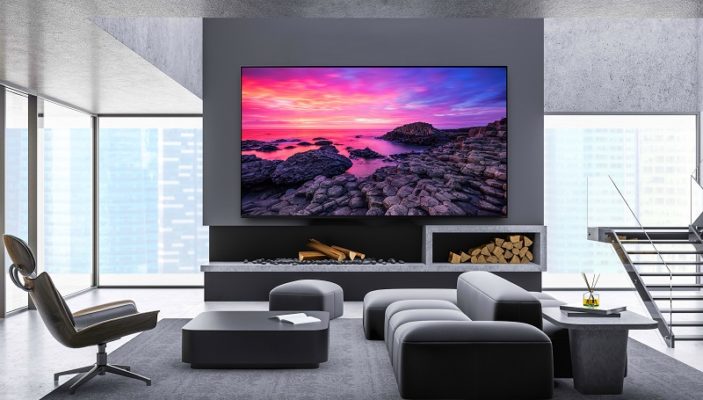
OLED panels get all the glory in discussions about home cinema nowadays; that often includes a substantially more demanding price tag. Owning one brings a certain level of prestige, though the advantages of say a 4K OLED over a 4K LED do not necessarily justify the eye-watering price differences. Yes, deep inky blacks are ridiculously attractive and you don’t have to worry about blooming when viewing in dark rooms, but when you can get picture quality that’s just as good for less, it’s worth taking the step towards a modern LED.
That applies even more so with LG’s 2020 range of NanoCell TVs. Although the company is pioneering when it comes to OLED, what it has been doing to up the value of the new NanoCell range should not be overlooked.
NanoCell, similar to Samsung’s QLED, is an LED TV where the pixels are coated with nano particles to absorb unwanted colours, improve colour accuracy (specifically through narrowing red and green wavelengths for more purity), and allow for tighter control over each pixel. Pair that up with LG’s preference towards using IPS panels and you typically get consistent wide-viewing angles and better colour reproduction. As a rule of thumb, the biggest compromise is that IPS panels aren’t as reliable when it comes to contrast, so you can expect less purity from the deepest blacks and brightest whites, with grey tints in the former and a glowing effect for the latter.
Year-on-year LG has been improving software to atone for IPS’ most obvious weaknesses, and what it has done with the 2020 NanoCell range seems to have gone a significant distance in reducing these issues to rarely noticeable niggles.
I used the 65″ Nano91 4K (exactly the same as the Nano90 where the only meaningful difference seems to be the stand) to come to this conclusion, watching it for many hours a day across a week. The most explicit contrast issue only occurred once (discussed below), and there were many moments where content was just as impressive as the same on an OLED (I tested it against the exceptional Sony AG9).
Design
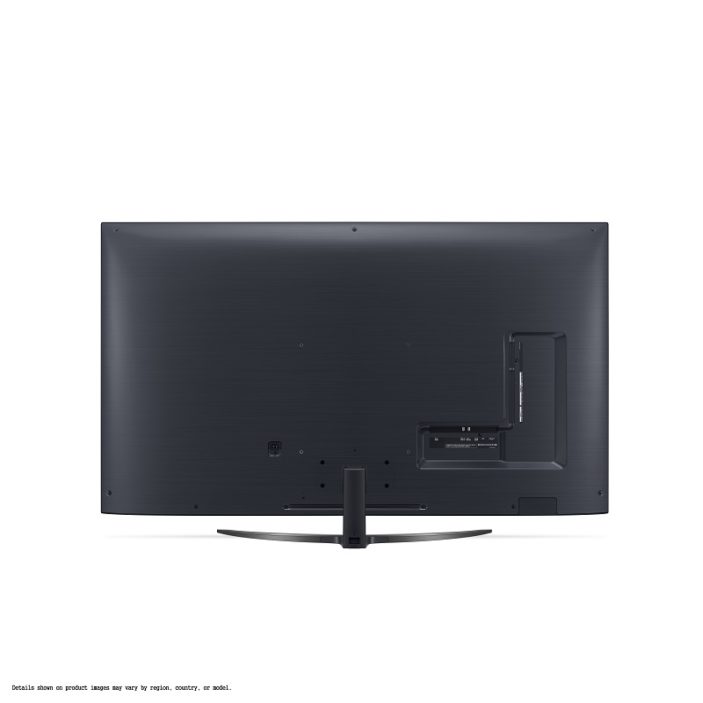
LG has struck a nice balance between needing to house the system for a direct-lit screen and keeping the body relatively thin for those who like to wall-mount their sets. It’s not as super-thin as an OLED, with a slight curve when it comes to the back. Though it may look premium, the body feels rather plasticky and cheap.
Facing the TV’s rear, the brunt of connectivity points outwards from your right. That’s four HDMI ports, two of which are future-proofed 2.1 – handy for gamers when next-generation consoles come out. Port 3 has eARC to maximise a modern soundbar, while the other two ports are your regular HDMI 2.0 connections. The positioning makes them incredibly easy to reach if you want to wall-mount the TV.
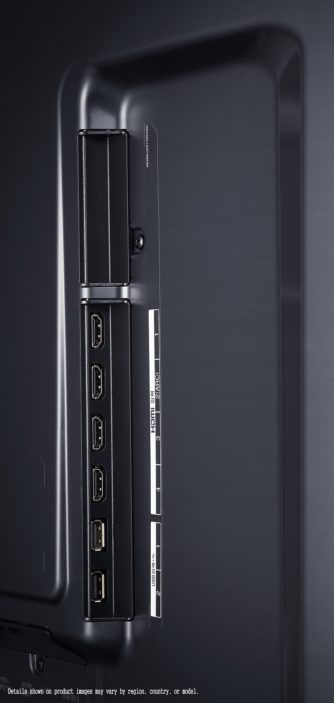
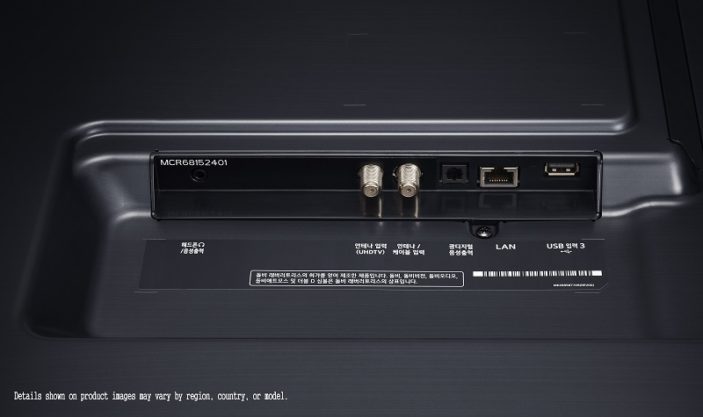
Hugging the same side but facing the bottom is where you can find the USB ports, AV in, and connectivity for antenna and LAN. All typical inclusions, but very nice and central so they can be accessed at all times.
Unlike some other TVs, there’s no specific cable management which may be disappointing for design-lovers, but it just means you’ll have to be nifty when it comes to how you hide any connections.
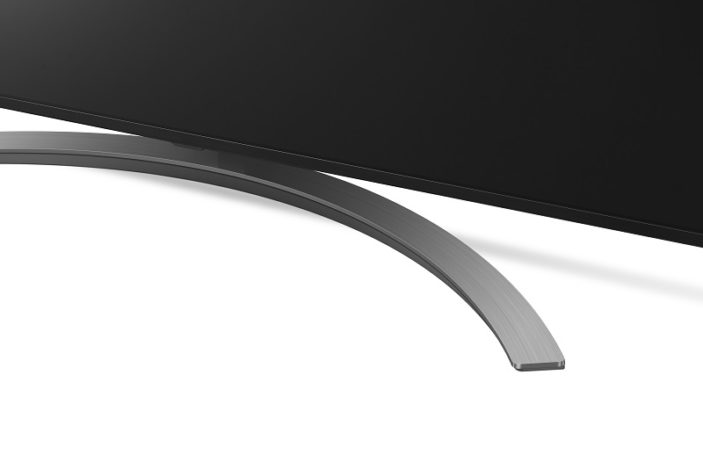
While TVs built with a low-profile tend to look more sophisticated and give off the impression of a floating screen. LG has decided to go with a centrally attached stand and an aggressively curved half-crescent design. The benefit of this is the exact downside of low-profile sets: if you’re standing the set on some furniture then you’re going to have a lot of space and flexibility for a soundbar (LG has just released its new range, and the Sonos Arc is getting some incredible reviews). It also helps raise the panel more so if it’s sitting at the foot of your bed (like any good bedroom cinema) then you can be incredibly indulgent and watch it while lying down.
Magic Remote and WebOS
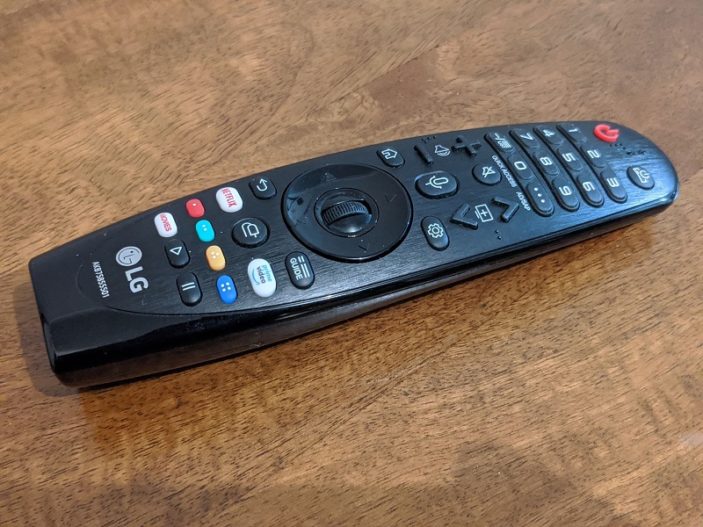
Navigating an LG TV in 2020 is smooth and relatively seamless. I love Android’s UI, but if I had to choose just one, my vote would 100% be going to LG’s WebOS. The designers have arrived at what I feel is the perfect balance of accessibility and design, popping up a panel of apps that is less obtrusive and can be scrolled quickly with the Magic Remote.
Android’s operating system is still king when it comes to the multitude of apps in sight, but the much more stable WebOS is just less of a hassle. Settings are easier to access, and when you’re constantly experimenting with settings to optimise whatever content you’re watching, that’s very valuable.
Some hate LG’s award-winning but cheap plastic Magic Remote; I love it. Those more used to long and flat remotes – like the one Sony uses – may be surprised by the aggressive looking scrolling wheel at first, but it makes it so much easier to use a browser, scroll through YouTube and quickly changes settings without constantly pressing arrow-keys (you can use those too though).
The remote works as a wand as well, and does it’s best Nintendo Wii impersonation with a chunky pointer (you can change the size of that via three options) that makes typing in search bars feel much more efficient. There are also quick-access buttons for both Netflix and Amazon Prime.
The downside is just how sensitive the remote is. Knock it even slightly and you’ll accidentally bring up the pointer, interrupting your viewing experience. Of course the easiest fix to this rarely-an-issue issue is to just place the remote somewhere where you aren’t elbowing it like a disorganised chump.
Performance
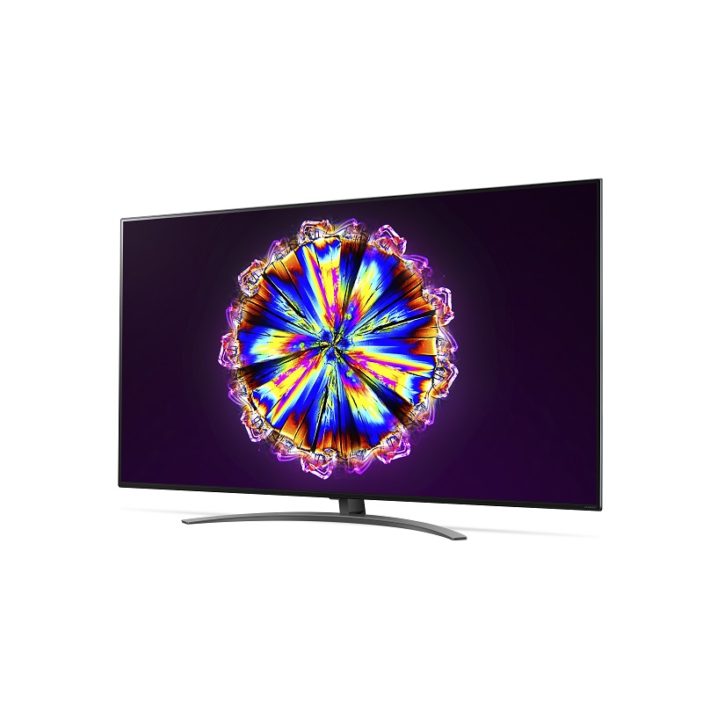
The grace feature of the new NanoCell range seems to be a new full array backlight system, tweaked to use power more efficiently to improve the IPS panel’s contrast ratio. The idea here is that you get improved black levels, precise local dimming and fine shadow detailing, working to bring the performance closer to that of an OLED. Still, an IPS panel is never going to have the native contrast ratio of its most obvious alternative – a VA panel – so there will be slip-ups.
From my experience, that slip up only happened once. I was watching through The Mandalorian on Disney+, and there was one heavily edited outdoor scene where the camera would frequently switch between two characters, one with a bright sky behind them. Contrast was all over the place, and it would seem the TV wasn’t exactly sure on how to handle the 4K content. This may be the TV’s highly touted Dolby Vision IQ (which constantly adjusts and optimises Dolby Vision content) working a bit too hard, or it could just be because DV implementation on Disney is less than ideal.
I never saw anything like that again, even while binging the MCU films (again, on Disney+) in 4K, and that takes you throughout a tremendous range of lighting environments and fast-paced action. Impressively, I never once had an issue with motion blur either, which would be credited to the use of TruMotion 200 technology. Sports fans will be very satisfied.
If I’m going to be really nit-picky – and with modern TVs you kind of have to – then once during the hyper-colourful Doctor Strange I noticed a slight light bleed in the upper corners, but not in the bottom, despite what seemed like the same level of black. Replaying the scene after setting local dimming to high eliminated this niggling issue.
An a7 Gen3 Processor is responsible for handling the overall functional of the entire system, and while it’s nowhere near the most powerful in LG’s arsenal for 2020, it seems to be work as efficiently as possible. Given Dolby Vision IQ is supposed to be one of the game-changing features of the new range, perhaps the processor’s lack of relative power is reason for the above issue during The Mandalorian. Aside from that, there are very few seams in the overall visual and audio experience.
Audio
Speaking of audio, this TV is capable of impressive clarity even at higher volumes. It’s never going to sound as good without a soundbar attached to it, but Dolby Atmos support means you can safely expect excellent performance all-round. The bass isn’t as bouncy as one would hope, but the clarity certainly makes up for it. Turning AI Sound on does it’s best to manage the loud parts of film and keep it consistent at whatever volume you have it set at.
My experience connecting various different Bluetooth earphones and headphones was disappointing. While connection stabilised and remained strong after initial sputters, interrupting playback at all – for example, rewinding – would bring the few seconds of choppiness while the signal finds it footing. I had the same issue with the CX, the resounding hero of LG’s 2020 collection, but perhaps the OLED 8K – which use the higher-end processors – handle this better.
FPS
High frame-rate films are handled brilliantly. I watched Gemini Man, which sits at 120FPS, and had absolutely no issues despite the rather rapid pace of the action. Unfortunately, the processor isn’t magic enough to turn it into a good movie.
Those concerned with other formats need not be. HDR, HDR10+, Dolby Vision – one thing LG have made sure to do is ready the TV for the next couple of years so you aren’t feeling outdated anytime soon. While I feel HDR10+ will be severely outpaced by Dolby Vision in the coming years, it’s good to have both optimised to capture that sense of realism and immersion that dominate the bottom-line of why consumers buy these experience TV’s in the first place.
Filmmaker Mode
One thing I don’t really care for is Filmmaker Mode. LG has put a lot of stock into curated settings, so you can have full control over how the picture looks and adjust it to best suit your tastes. The value in filmmaker mode is that it takes out a lot of decisions, disabling post-processing, and just defaults to all the most popular settings anyway. But there is a tendency for inconsistent brightness levels and some flat colours. Standard mode was my go-to throughout my time with the TV, where I found content was much more vivid and natural-looking.
One thing you definitely want to turn off is the Energy Saving mode, which is automatically enabled out-of-box. This should be the first thing you’re changing in the settings, seeing as it can dim a bit too much and make it look like something’s wrong with the TV.
AI
You’ll find plenty to like if you’re looking for smarts and integration of connected devices. ThinQ AI is LG’s way of ensuring the navigation experience is as smooth and seamless as is possible right now. Whether you’re using Google Assistant, Amazon Alexa, Apple Airplay 2, or Apple Homekit, it’s safe to expect very few to no frustrations when it comes to controlling how the TV works in the smart home ecosystem.
Gaming
For the gamers, I tested this TV with Sekiro, Borderlands 3 and Doom Eternal. Gaming mode automatically toggles on when you switch to your connected console, which optimises settings for higher frame-rate titles. You’ve got real-time VRR, HGiG tone mapping and G-Sync, so more intense titles will be handled efficiently while colours really pop and frame rate is constantly tempered to maintain a high standard.
There was no noticeable tearing in a game as rapid and breathless as Doom Eternal, which was probably the most effective title as none of the colours are oversaturated (like on yellow-and-orange-galore Borderlands 3) to begin with, and character models have great texture. That all comes across very well with this TV, and I wouldn’t hesitate to recommend this to any gamer, especially given the ideal connectivity and settings for when next-gen consoles launch later this year.
Viewing Angles
The bread-and-butter of IPS panels lie with viewing angles. You can sit off-axis and still expect exceptional picture quality. In theory. In practice, that’s more or less correct, although the wider viewing angles are still plagued with some noticeable blooming effects in the corners.
Verdict
It’s clear that LG has taken its LED TV’s in exactly the right direction; rather than just adding shallow changes the designers have added some meaningful features that will ensure this future-proofed TV is relevant for many years to come.
The Nano91 (65″, 75″, 86″) 8K TV is feature-rich, with enough thoughtful settings to give you a great amount of options when it comes to maximising content and getting the best possible viewing experience. Audio is likeable enough that you don’t need a soundbar is smaller rooms (as long as you don’t need richer bass), and the overall user experience is exceptionally smooth.
I’ve only had experience with 3 other LG TV’s in my time – 1 of them being the CX OLED which we’ll be publishing a review for soon – but I’m still confident in stating this is one of the best LEDs the company has created. It’s still expensive, but still sits comfortably in the mid-range for those looking for reliable higher-end TVs without wanting to fork out for an OLED.
The real test will lie with gaming once the new-gen comes out and those HDMI 2.1 ports are put to the test, but for now, you really can’t ask for much more.
![]()
![]()
![]()
![]()
![]()
FOUR AND A HALF STARS (OUT OF FIVE)
Highlights: Outstanding picture quality, and enough settings to customise it depending on the content; as future-proofed as you can get at this price point; gorgeous viewing angles with very few issues; barely-there bezels; easy to navigate and customise; great clarity even at higher volumes.
Lowlights: Poor Bluetooth performance with headphones and earphones; IPS contrast issues can still rear ugly head, albeit rarely; bass can be flat.
Manufacturer: LG
Prices: AU$3,239 (65″), A$5,039 (75″), A$7,439 (91″)
Availability: Now
Review based on a loan 65″ unit provided by LG for one week.
